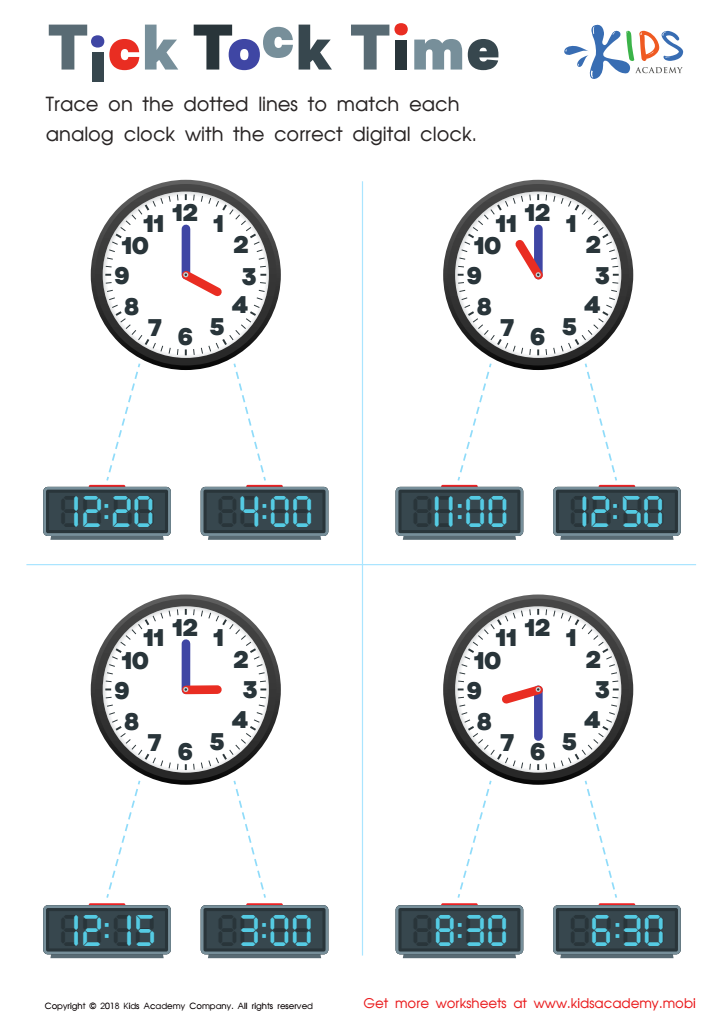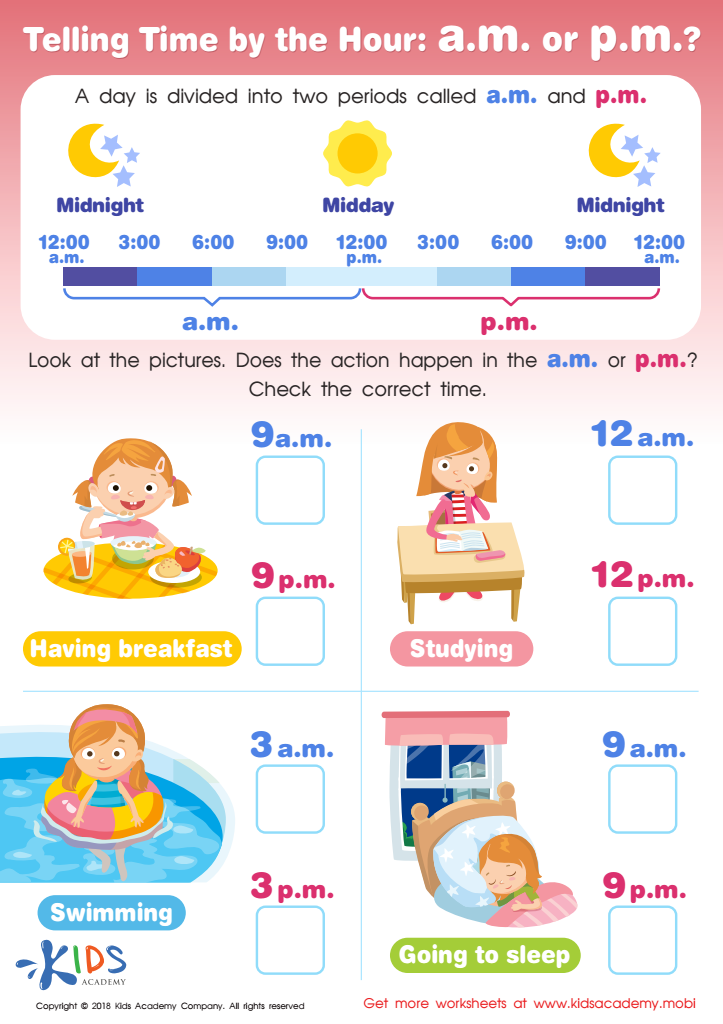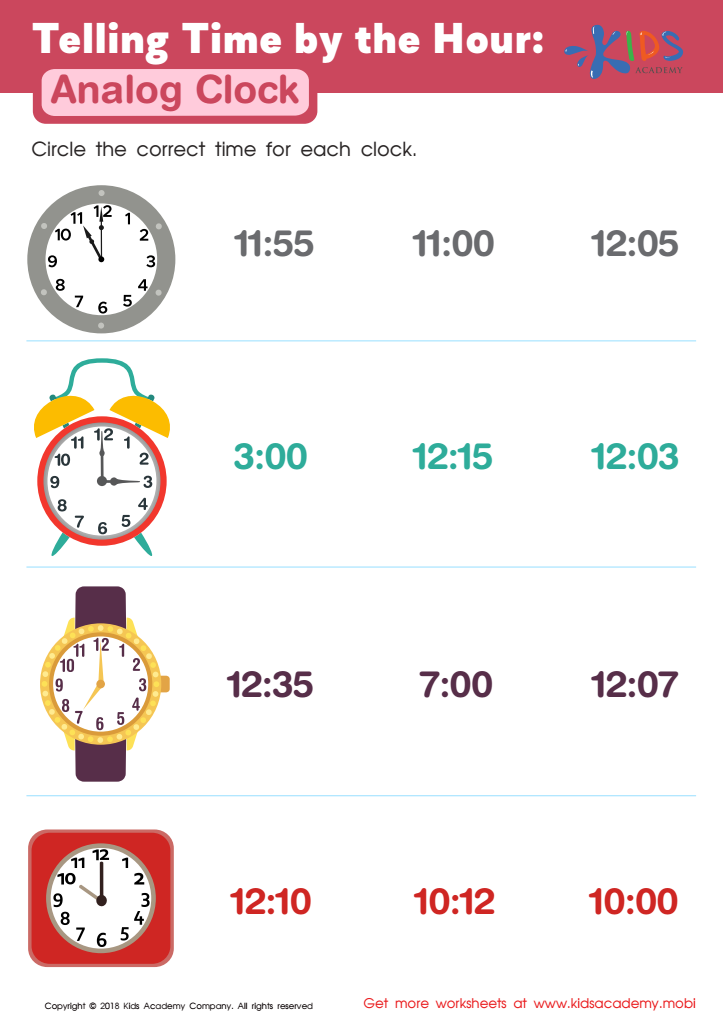Normal Time Worksheets for Ages 3-6
5 filtered results
-
From - To
Introduce your little learners to the concept of time with our engaging Normal Time Worksheets, specially designed for children aged 3-6. These worksheets provide a fun and interactive way for young minds to grasp the basics of telling time, featuring colorful illustrations and simple activities. Whether they're learning to read analog clocks or understanding daily routines, our resources promote active learning and skill development. Easy to print, these worksheets are perfect for homeschooling or as supplemental practice in the classroom. Help your child develop essential time-telling skills while having fun with our age-appropriate activities! Explore our collection and watch them thrive!


Years Worksheet


Tick Tock Time Worksheet


Tilling Time by the Hour: a.m. or p.m.? Worksheet


Telling Time by the Half Hour Worksheet


Telling Time by the Hour: Analog Clock Worksheet
Normal Time, or the concept of understanding and engaging with standard time and routines, is crucial for children aged 3-6 as it significantly influences their development. During these formative years, children are like sponges, actively learning through observation and experiences. Establishing a routine helps them grasp the concept of time, providing structure and predictability that fosters a sense of security. Understanding Normal Time enables children to anticipate events, helping them develop necessary time management skills and a sense of responsibility as they grow.
Moreover, routines contribute to emotional regulation. When children know what comes next—whether it's mealtime, playtime, or naptime—they can prepare mentally and emotionally, mitigating anxiety or behavioral outbursts. Teachers and parents cultivating this understanding also encourage independence; for instance, allowing children to manage personal tasks within a structured timeline bolsters confidence and self-esteem.
Additionally, caring about Normal Time emphasizes the importance of language acquisition, as discussing time helps vocabulary expansion. Acknowledging these aspects encourages a holistic approach to child development, where educators and parents align efforts in fostering children’s social, emotional, and cognitive growth—essential skills that form the foundation for future learning and personal development. Ultimately, prioritizing Normal Time cultivates well-rounded, adaptable, and secure individuals.
 Assign to My Students
Assign to My Students















